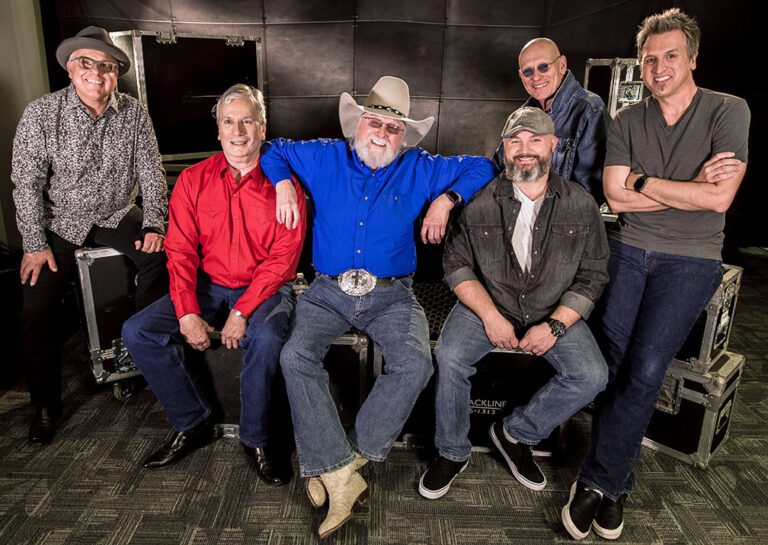As a caveat to what you’ll read if you continue reading this column, I admit I am no expert on Southern rock music. After all, Gregg Allman of The Allman Brothers — a band some label as the first Southern rock group — once said another term for Southern rock is “rock rock.”
As most of my readers know, I have little interest in rock music … unless the word is followed by “-abilly.” I must admit, however, to a brief peer-pressured KISS phase in 1977 that I still work to live down. (Yeah, I was 11 years old. I got the belt buckle — and I later scrapped the KISS sticker off, leaving myself with a buckle that could easily display a Johnny Cash decal.)
Gregg Allman had a good point.
Despite what it became, rock music largely grew from the South, with Elvis Presley, Jerry Lee Lewis and Buddy Holly. The blues heavily influenced rock, and performers like Janis Joplin and Creedence Clearwater Revival appealed to fans of both rock and the blues with performances like “Me and Bobby McGee” and “Proud Mary.” Kris Kristofferson penned the former, and country artists ranging from Johnny Cash to Roger Miller have covered the tune.
On occasion, what came to be described as Southern rock crossed over to the country charts.
The Marshall Tucker Band’s 1977 hit “Heard It in a Love Song” reached No. 51 on Billboard’s country charts. The tune, featuring — of all instruments — the flute, still receives occasional airplay on classic country radio stations today.
Other Southern rock bands touched the fringes of country music on occasion, especially those like Lynyrd Skynyrd and Barefoot Jerry. More recently, groups like The Kentucky Headhunters offered no apologies as they blazed a trail that blended Southern rock with country to the point that fans couldn’t tell the two apart.
But when it comes to a Southern rock group that consistently walked the tightrope between “rock rock” and country, arguably, none managed to do it as well as The Charlie Daniels Band (CDB).
CDB emerged from North Carolina shortly after Charlie Daniels graduated from high school in the late 1950s. Daniels was natural musician who played the guitar, fiddle, banjo and mandolin. Some critics credit Charlie Daniels with starting the “outlaw country” movement, one that didn’t officially catch on until the 1970s.
But to prove his direct connection to Southern rock, Daniels often played with The Marshall Tucker Band and Barefoot Jerry.
CDB officially crossed into the country genre in 1975 when the band recorded a Southern anthem, “The South’s Gonna Do It Again.” Another tune, “Leave this Long-Haired Country Boy Alone,” also helped cement CDB as a regular on country airwaves.
But it wasn’t until 1977 that Charlie Daniels and his band hit their stride.
“Million Mile Reflections,” an album now certified as triple platinum, took both the Southern rock and country music worlds by storm.
The album — a compilation that reached No. 1 on the country charts — included CDB’s most popular song, “The Devil Went Down to Georgia.” A 1979 release, the single hit No. 1 on the country charts and No. 3 on Billboard’s Hot 100 before ultimately earning CDB a Grammy Award. Heavily influenced by bluegrass in both lyrics and instrumentals, the single made CDB a mainstay on country radio for decades to come.
While Charlie Daniels performed until his death in 2020, the songs country fans best remember came in the 1980s.
In fact, “In America” followed up “The Devil Went Down to Georgia” and served as a direct appeal to country music’s patriotic fan base upon its release in 1980. The lyrics — a breath of fresh air to a nation mired in the embarrassment of the Iran hostage crisis, high fuel prices and double-digit inflation — reminded Americans and the rest of the world that the U.S. was not on the verge of collapse. The song capitalized on the U.S. National Hockey Team’s capture of the gold medal in the 1980 Winter Olympics, as well as on the “It’s morning in America” vision of hope Ronald Reagan promoted during his presidential campaign.
“In America” offered Charlie Daniels a chance to summarize, in just a few words, the patriotic Southern man’s view of the status of the U.S. and the springing optimism about what lay ahead:
“The eagle’s been flying slow,
And the flag’s been flying low,
And a lot of people sayin’
that America’s fixin’ to fall.”
From the three-line stanza summarizing the fears of many Americans and the hopes of some overseas foes, CDB then goes into a patriotic frenzy — one that, at least on country radio, helped pull the nation through some dark days.
“But speakin’ just for me,
And some people from Tennessee,
We’ve got a thing or two to tell you all.
This lady may have stumbled,
But she ain’t never fell,
And if the Russians don’t believe that,
They can all go straight to hell.”
The song reminded those who believed, and some who even relished the thought, that America’s weaknesses would push the nation over the edge that the U.S. had started to rebuild its confidence.
And when it arrived — well — “God bless America again.”
CDB pointed out that Americans were “walking real proud” and “talkin’ real loud.” The U.S. was a country that might have seen a little infighting, but when it came to disrespect around the world, “We’ll all stick together,” and that included the “cowboys and the hippies and the Rebels and the Yanks.”
After “In America” topped out at No. 11 on the Billboard Top 100 and No. 13 on the country charts, CDB followed with the haunting single, “The Legend of Wooley Swamp.” The song was a success on the Top 100 where it reached No. 31. But despite tremendous airplay, country fans dismissed it, and it only reach No. 80 on country charts.
The band didn’t have another successful song until 1986 when “Drinking My Baby Good-Bye” rose to No. 8 on the country charts. To finish out the 1980s, CDB released “Boogie Woogie Fiddle Country Blues” (No. 10) and “Simple Man” (No. 12).
After 1990, CDB’s new material never again reached the popularity of his string of 1980s hits.
While CDB may have been a Southern rock band, it also had a tremendous influence on the country music scene. The proof is in the pudding. Charlie Daniels became a member of the Grand Ole Opry in 2007, and in 2016, he was enshrined in the Country Music Hall of Fame.
Until next time, happy New Year! Let’s all hope this year someone like Charlie Daniels will step up and reunite our seemingly disjointed union again.
Since retiring from a career as an outdoor recreation professional from the State of Arkansas, Kris Rutherford has worked as a freelance writer and, with his wife, owns and publishes a small Northeast Texas newspaper, The Roxton Progress. Kris has worked as a ghostwriter and editor and has authored seven books of his own. He became interested in the trucking industry as a child in the 1970s when his family traveled the interstates twice a year between their home in Maine and their native Texas. He has been a classic country music enthusiast since the age of nine when he developed a special interest in trucking songs.














